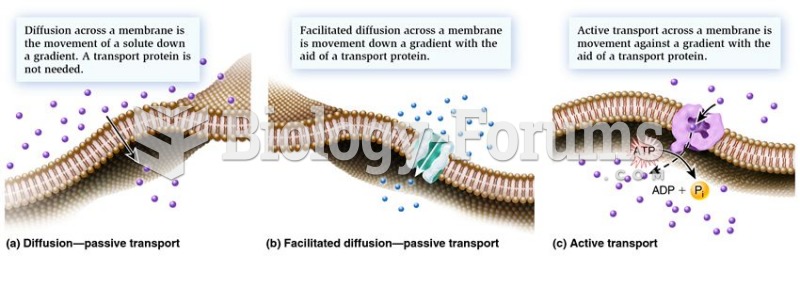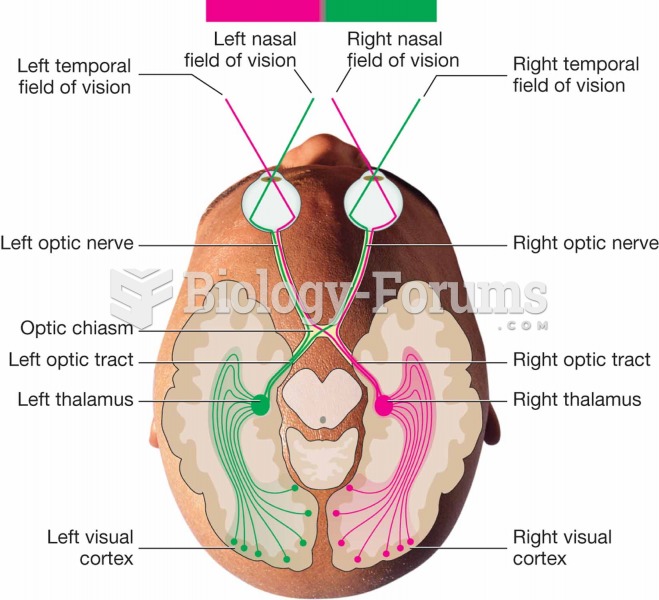|
|
|
Once thought to have neurofibromatosis, Joseph Merrick (also known as "the elephant man") is now, in retrospect, thought by clinical experts to have had Proteus syndrome. This endocrine disease causes continued and abnormal growth of the bones, muscles, skin, and so on and can become completely debilitating with severe deformities occurring anywhere on the body.
The immune system needs 9.5 hours of sleep in total darkness to recharge completely.
Long-term mental and physical effects from substance abuse include: paranoia, psychosis, immune deficiencies, and organ damage.
People with high total cholesterol have about two times the risk for heart disease as people with ideal levels.
The people with the highest levels of LDL are Mexican American males and non-Hispanic black females.







